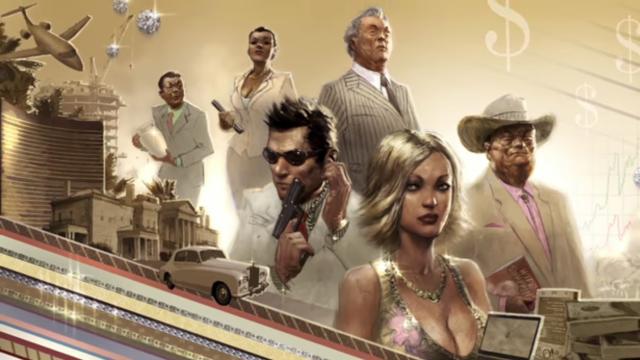As Grand Theft Auto morphed from the original top-down action to become the juggernaut 3D franchise we know and love, other publishers were looking at how they could make billions from open-world games of their own.
Midway approved one such game called This Is Vegas. It would go on to be one of the most expensive failures in gaming history, with around $100 million (around $US60 million) lost on the cancelled project.
The tale of This Is Vegas was told a literal age ago – development on the PS3 and Xbox 360 game shut down in 2010. But a lot of details about the game haven’t been chronicled to the extent that researcher Liam Robertson has done.
Robertson, in a video for Game History Secrets, has combined a lot of the game’s history, as well as placeholder footage and pre-production assets. For people who never heard of This Is Vegas, it’s probably best described as a Vegas version of Yakuza – there was a huge focus on mini-games like dancing, hand-to-hand combo-based combat and some basic gunplay.
But the game suffered a bit of an identity crisis: developers couldn’t work out whether it should adopt a more jokey tone, or lean harder into guns, violence and blood. Unreal Engine 3 was forced on studios, despite not being fully tested at the time. The game’s development ran into further trouble when Midway’s major shareholder was forced to sell his stake following the global financial crisis, which proved to be the death knell for Midway, which hadn’t posted a profit since 2000 and was surviving on loans.
This Is Vegas isn’t really a game that I can imagine any studio would want to revisit today. The Saints Row and Yakuza series both fulfil the kind of tone and activities that you could do, and the idea of helping out a struggling casino and a mobster politician probably wouldn’t be enough to get greenlit by a major publisher today.
Warner Bros currently own the IP, having picked it up when Midway folded over a decade ago. Development was a fair way down the road, with Warner Bros spending around $US10 million on development after the $US50 million that Midway sunk into the project. Cinematics were mapped out, and a lot of the cutscenes and gameplay can be seen in Robertson’s video above.
What happened to Surreal Software? Well, as it turns out, things worked out OK. Surreal was based in Washington, and when development was shut down on This Is Vegas, the developers were folded into another Washington-based studio owned by Warner Bros: Monolith Productions, the makers of Shogo: Mobile Armor Division, Blood, No One Lives Forever, and the studio that would go on to make Guardians of Middle-earth, Shadow of Mordor and Shadow of War.
[referenced url=”https://www.kotaku.com.au/2017/09/tribute-thursday-shogo-mobile-armor-division/” thumb=”https://www.kotaku.com.au/wp-content/uploads/sites/3/2015/09/shogo-mobile-armor-division-38-410×231.jpg” title=”Remembering Shogo: Mobile Armor Division” excerpt=”These days Monolith are better known for their work on the Nemesis system and Shadow of Mordor. But back in the day they also produced one of the most intriguing and unusual shooters of its time – the flawed, but unabashedly fun Shogo: Mobile Armor Division.”]

Leave a Reply